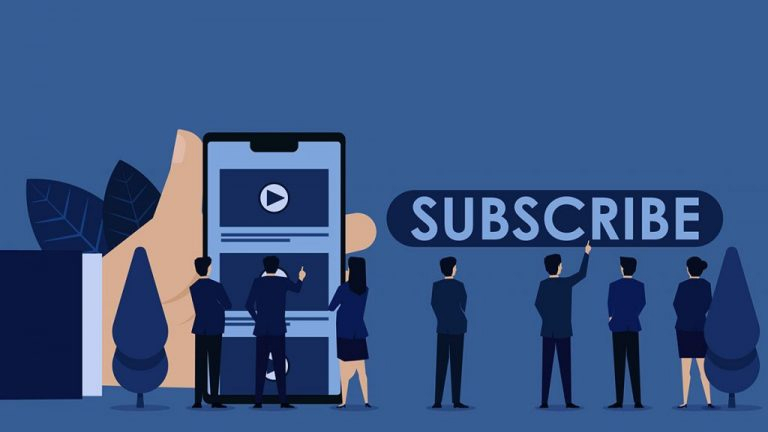There has been a surge in preferences for temporary ownership over permanent ones. People want the benefits of owning without having to buy. Uber, Lyft, Curb and other on-demand ride services are cited to have a drastic impact on automobile sales due to the ease of use without having to buy. There’s a drastic shift in the customer mindset that has urged companies to manage a direct, responsive, multi-channel relationship with their users, giving rise to a complex subscription-based economy.
The intent here is to break down these complex structures into user-friendly designs, which can be easily comprehensible.
Since businesses capture data of their current users, it helps to create personalized offers through target marketing and build custom communication and pricing models. This increases the LTV (lifetime value) of a user or consumer.
A subscription model provides predictable and recurring revenue for a long-term engaged user base. Click to Tweet
The business can concentrate on the retention of users overspending on acquiring new ones. Similarly, subscription strategies allow for price diversification, accommodating a broader, diversified income group of users over a fixed ‘one-price-for-all’ model.
Subscription plans are also psychologically attractive to users as they don’t have to make long-term commitments nor do they have to pay a large amount at a single go. It’s thereby no surprise that a lot of industry giants as well as mid-size companies are using subscription models as the basis for their business.
These strategies can be broadly categorized into 3 types:
1. Traditional Models
The simple relationship of regular exchange of certain goods or services at a fixed price for a certain period that creates a long-term understanding between brands and it’s users. These can be broadly divided into:
a. Unlimited use: Set price for unlimited use of product or service for a fixed amount of time.
b. Pay as you go: Pay for usage as and when needed at a fixed price per-use.
c. Premium: Additional/Upgraded services or features for an additional fee.
d. Pay per unit/user: Based on the number of people using product or service.
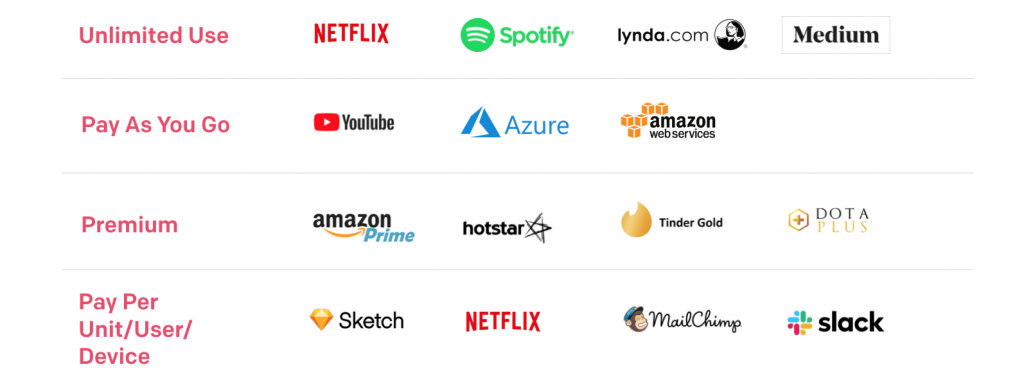
Examples of traditional subscription models
2. eCommerce
A newer subscription model type based on the supply of fast-moving consumer supplies that are needed regularly to reach repeat users. These can be divided into :
a. Curation subscription: Surprise the user with a curated selection of different products based on their preferences.
b. Refill subscription: Replenish the same or similar items (usually commodities).

Examples of e-commerce subscription models
3. Innovative
Novel subscription models that combine one or more pricing strategies, that offer products and services catering to multiple needs. These can be broadly categorized into:
a. Buy-back subscription: Exchange the used subscribed product for virtual money or other products.
b. Hybrid subscription: Merging two different offerings symbiotically for wholesome user experience.
c. Consumer durable subscription: Use and switch multiple durables (that are usually long term purchases) for a set price and a short term period.

Examples of innovative subscription models
The adoption of these models has helped businesses’ stand apart from the rest. But the question remains, how do we create a holistic blend of pricing strategies, coupled with the best UX practices to give the users exactly what they need.
Let’s explore some of the strategies that can help you build a model conducive for your business as well as the user’s wallet
1. Feature-Add Value
Increase pricing with added features exclusively.
Eg. InVision: Instead of just showing incremental features with pricing, Invision shows the user various kinds of features they can offer and what they are missing out without these. It highlights the most popular package based on user behavior to buy/upgrade prompts the user towards a particular purchase.
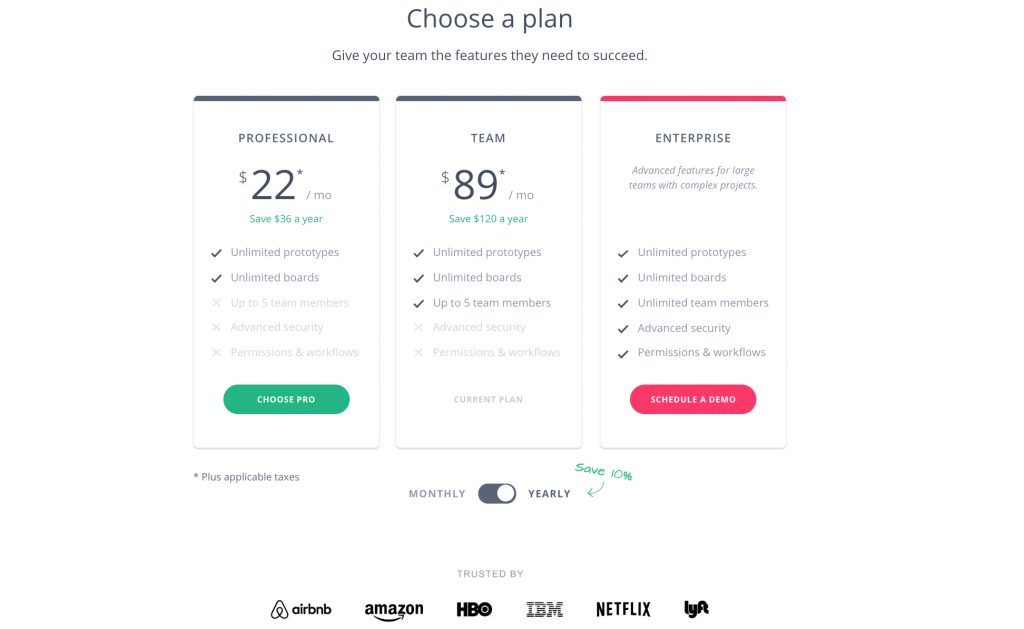
Image source
2. Interactive Pricing
A customizable pricing model calculating real-time numbers for B2B services and products.
Eg. SketchApp: Instead of having the users contact the support team for a definite number of users or a large enterprise pricing, Sketchapp allows the user to customize the volume with a slider, keeping the pricing interactive and engaging with real-time costs.
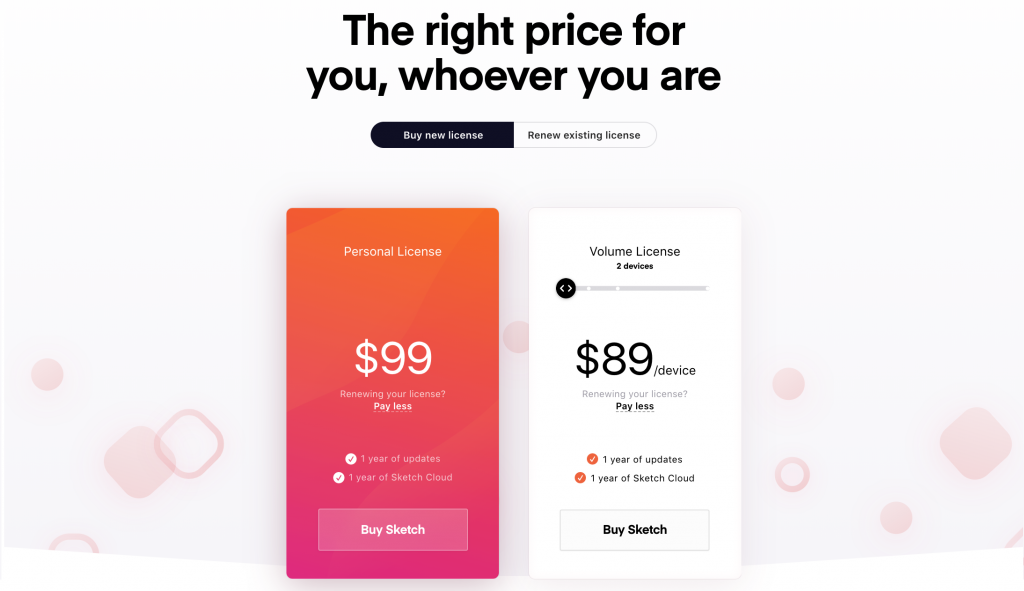
Image source
3. Paywall
Limited access to content to influence subscription.
Eg. Medium: Medium lets users experience featured content, by allowing 3 free stories to read. This helps the user to gauge the quality of content available on the platform that has a greater probability of influencing long-term subscriptions.

Image source
4. Freemium
Unlimited access to the platform with basic features, to get the user glued to the product before adding a fee component with value-added features.
Eg. Spotify: Spotify allows the users to access unlimited music (with ads), playlists and podcasts, but only access the shuffle mode on mobile. Similarly, it allows on-demand content on its web portal and not on mobile. This way the user gets a taste of the content and adopts the platform faster, moving from being a free subscriber to a paid subscriber.
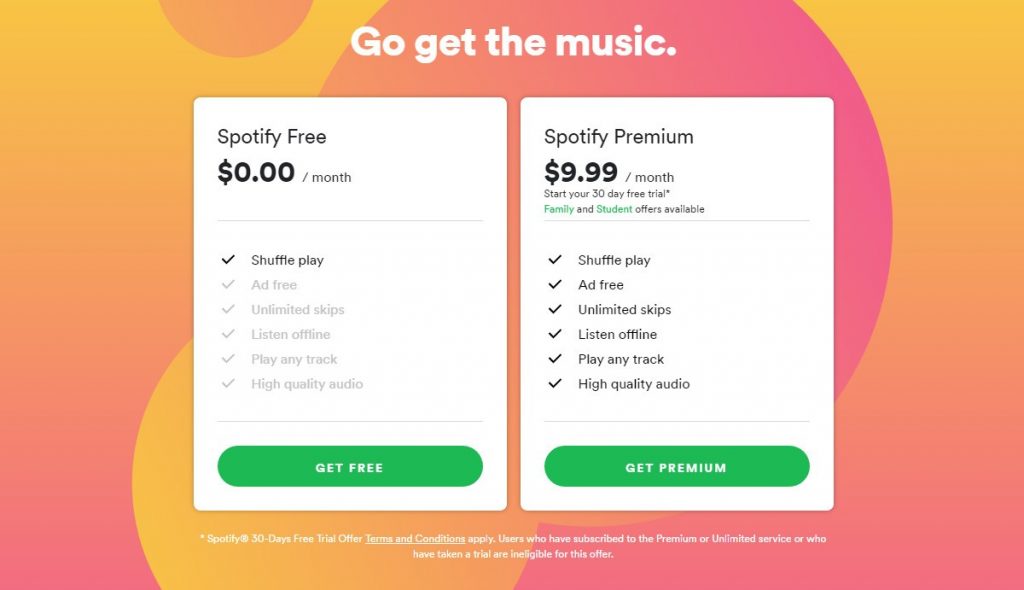
Image source
5. Sell a story
Elaborate the benefits to a user to add value instead of highlighting just the features. This also projects the tone of voice and persona of the brand.
Eg. MailChimp: In the below example, MailChimp has put down the features, in an incremental form, by listing down its features, not merely as bullet points, but as a story to tap into the reptilian brain of the user. This creates a personal association with the brand and builds a connection.

Image source
6. Fair billing
Bill only for the number of people using the product or the number of units used. If it is prepaid, return in the form of credits or discounts in the next billing cycle. This helps in building long-standing relationships.
Eg. Slack: Slack follows a ‘fair billing’ policy, where it provides its subscription fees ‘per active user’ per month. If a user becomes inactive during this period, Slack adjusts the payments for the inactive members in the next billing cycle. This assures the users that the brand cares for them, creating a loyal base of users.
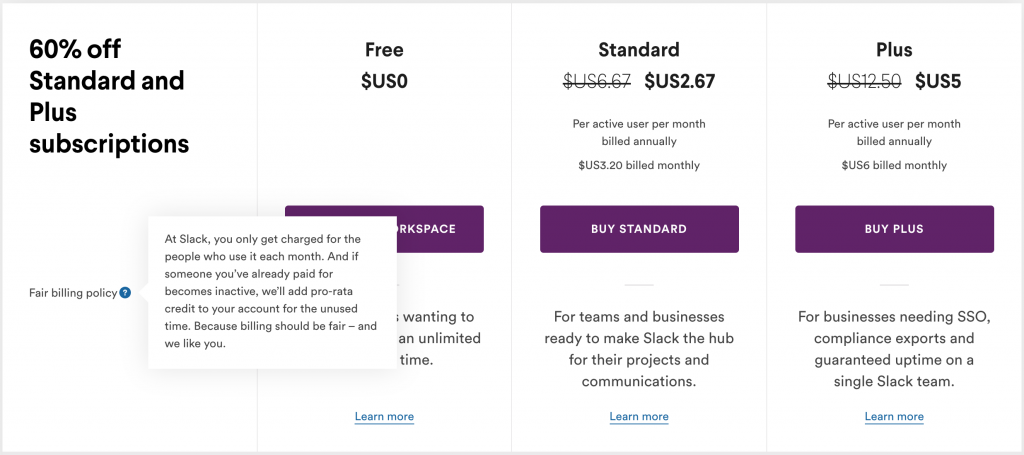
Image source
The above strategies can help you build a model conducive for your business as well as the users’ wallets. Let’s understand the parameters on which these strategies have been built that will help you create a pricing strategy for your own business.
a. Strategic pricing for business objectives: A well planned strategic pricing is the base of a good subscription model. Tiered pricing models that suit all types of users helps to accomplish business goals to scale business, acquire and retain customers as well as increase the lifetime value of the users.
b. Multi-Channel user acquisition: Create a seamless experience for the users to subscribe via multiple channels, viz., mobile, desktop, tablets or via customer support. This helps in adapting diverse pricing strategies while staying flexible to user needs.
c. Monetize long-term relationships: The formula for growth in this subscription economy is monetizing long term relationships rather than just shipping products (Click to Tweet) — that can help you in creating better variations of your products. In turn, you spend less money on marketing and on-boarding.
d. Adapt pricing to user behavior and needs: Understanding the user psychology that comes into play while making a purchase will help increase the conversion rates in subscriptions.(Click to Tweet) For eg., The left digit of a price gives the perceived value, making $2.99 more desirable than $3.00.
f. Aim for consistent, positive interactions with users: Strive to create a long-lasting user relationship even after the transaction has been made. Timely communication with users and personalized recommendations encourage the users to stay subscribed to a particular offering over another.
g. Give user total control & transparency in payments: Strive to make the billing easy and accurate for different pricing models. Keep the invoice easy to understand and informative to develop transparent and honest relationships between users and the brand.
The formula for growth in this subscription economy is monetizing long term relationships and offering value above all;(Click to Tweet) by creating different versions of your products that cover a wider audience that includes different customer personas.
It is imperative for companies to create a symbiotic relationship between the brand and users, by understanding their basic needs and expectations. It is now essential to understand and tap into the user’s emotions and craft experiences, which they can connect with and value. By using a holistic blend of effective information, usability best practices, and design guidelines, a brand can ascertain the purchase decision and retain user loyalty for an extended period.
